XII. SILVER OR CHINCHILLA PERSIANS
Texte und Bilder aus “THE BOOK OF THE CAT” von Frances Simpson aus dem Jahre 1903
THE BOOK OF THE CAT
CHAPTER XII.
SILVER OR CHINCHILLA PERSIANS
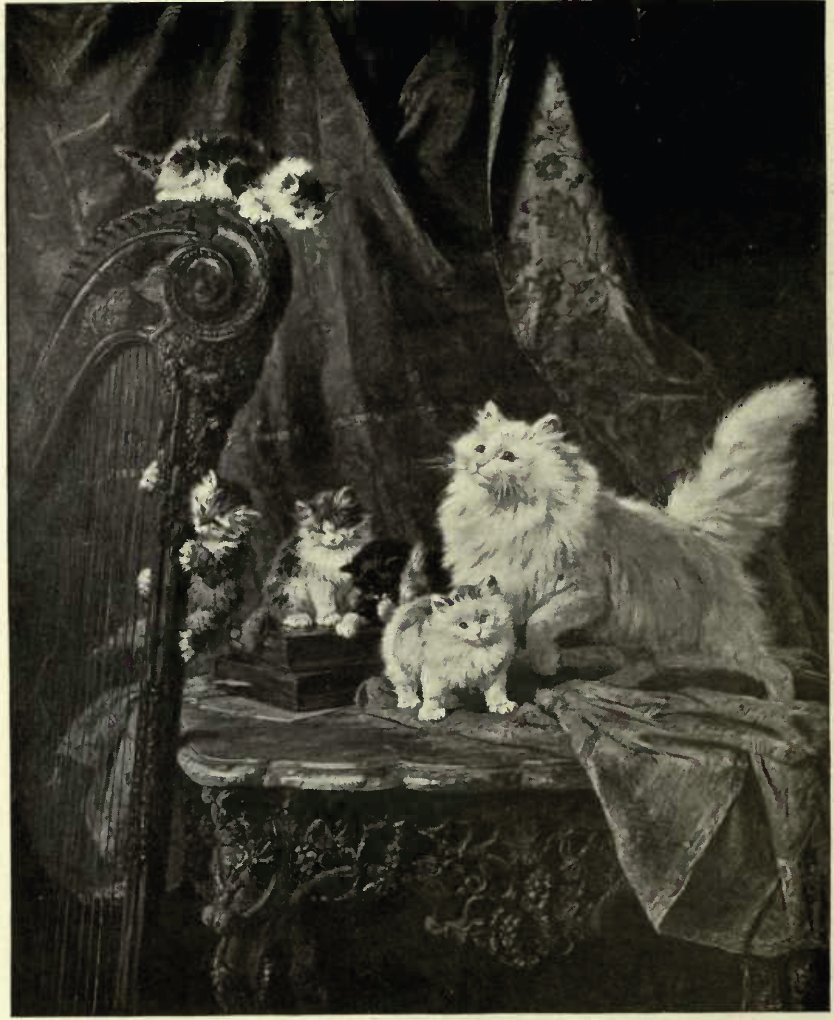
Perhaps no breed or variety of cat has been so much thought about, talked about, and fought about in the fancy as the silver or chinchilla Persian. If blues are a new variety, then silvers are of still more recent origin. Years ago this cat did not exist – that is to say, we should not recognise the silver Persian of today as the silver of bygone times, for the simple reason that the only class of silver in the fancy formerly was the silver tabby. In those days there were self-coloured cats and tabby, or marked cats, and broken-coloured cats. Previous to the introduction of a Chinchilla class at the Crystal Palace in 1894, the class for silver tabbies included blue tabbies “ with or without white, “ and it is curious to read in the old catalogues of the Crystal Palace shows the titles given to the various cats by the owners, some describing their cats as „chinchilla tabby,“ „light grey tabby,“ „silver grey,“ „silver chinchilla,“ „blue or silver striped.“ We may infer that these cats were either blue tabbies or silver tabbies, or something betwixt and between. I distinctly remember the large number of cats which in these enlightened days we should find it difficult indeed to classify.
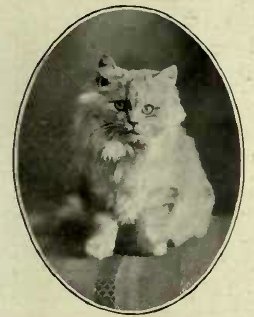
It is often said, „What’s in a name?“ But still, in trying to describe a particular breed of cat, it is as well to endeavour to find a term which expresses as nearly as possible both the colour and the appearance of the animal. There has been a great deal of discussion as to the correct name by which these delicately tinted Persians should be called.
The National Cat Club began by classifying them for the Crystal Palace show in 1894 as Chinchillas, and they have kept to this, although it is really a most misleading title, as the cats are quite unlike the fur which we know as chinchilla, this being dark at the roots and lighter towards the tips. Now, cats of this variety ought to be just the reverse.
It is difficult to give a correct idea of the real colour and appearance of these cats. The fur at the roots is a peculiar light silver, not white, as one might imagine, until some pure white is placed beside it, and this shades to a slightly darker tone – a sort of bluish lavender – to the tips of the coat. The Cat Club introduced the term „self silver, “ but this is suggestive of one colour only, without any shadings whatever. Another class, called „shaded silvers,“ was added; but then, again, tabby markings are not shadings. Formerly, blues used to be called „self blues,“ but this is entirely done away with, and now we never think of using this term, and speaking of them as blues we understand there should be the one and only colour.
Surely, then, the simplest term and the most descriptive of these beautiful cats is „silver,“ pure and simple, for whether dark or light they are all silvers, and so we should have blues and blue tabbies, orange and orange tabbies, silver and silver tabbies.
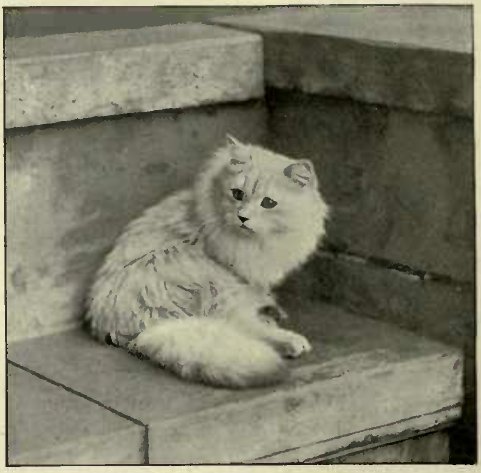
Then comes the question of what is nearest perfection in this variety of cat, which has come upon us of late years, evolved from the silver tabby and the blue. The ideal silver, to use the words of a well-known breeder of these cats, should be the palest conceivable edition of a smoke cat, with fur almost white at the roots and palish silver grey at the tips, and as free from markings as a smoke. I do not go the length of declaring that silvers cannot be too light, for I think that it is the delicate tips of silvery blue that lend such a charm and give such distinction to this variety. Without these delicate tippings a silver cat would look inartistic and insipid. There has been of late quite a rage amongst silver breeders to produce a totally unmarked specimen; but fanciers would do better to endeavour to obtain a light shaded silver free from tabby markings with the broad head and massive limbs, which at present are qualities not often met with in this variety. I am quite aware this is a most difficult task, but we must remember that „all good things come hard, “ even in breeding cats, and if it were not so half the interest for fanciers would be gone.
Having, therefore, considered what a perfect silver cat ought to be, I will give a description of the type of cat generally bred and exhibited as a silver. I read the following account in one of our daily papers, evidently written by a non-admirer of these lovely cats: „The chinchillas are very fashionable, and very difficult to breed in perfection. They took their name from a supposed likeness the fur bears to that of the chinchilla. But the chinchilla cat, as at present in request, bears no resemblance to the little rodent. Most of the exhibits are of a dirty white, tinged with lavender, with a quantity of marks and stripes on the face, body, and paws.“ Now this is not a pleasing picture, and one that would be considered libellous by a silver breeder. It is, however, true that at present our silvers are too full of tabby markings, and in many cases the undercoat is not silvery white, but light grey or pale blue. There are many silver cats with dark spine lines and shaded sides, but they are heavily barred on the head and legs, and the tail is frequently almost black.
It is a case of tabby blood which needs breeding out of the silvers, and which, no doubt, will be obliterated in time, so that two distinct types of silvers will only exist – the delicately tipped or shaded silvers, and the richly marked and barred silver tabbies. Just as in the case of the blue Persians it took a long while to eradicate the tabby markings which showed the existence of tabby blood, so amongst silvers the bar and stripes need to be carefully bred out, and we shall hope, in the good time coming, to have not self silvers, but a very near approach to this – namely, a perfectly unmarked but yet not wholly unshaded silver cat.
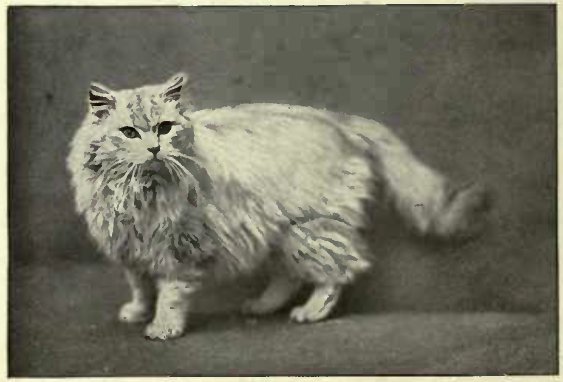
There is a greater delicacy amongst silver cats, and more difficulty in rearing the kittens, than in any other breed, and this may be accounted for by the immense amount of inbreeding that was carried on indiscriminately at the beginning of the rage for silver cats; also the desire to obtain lightness of colour caused breeders to lose sight of the grave disadvantages of loss of bone and stamina. Therefore it is that among the silver cats exhibited at our shows we seldom find massive limbs or broad heads or full cheeks. There is a tendency to hare-like proportions, and the faces have a pinched and snipey appearance, and noses are too long. However, great improvement is taking place, and with the numerous stud cats now at the disposal of fanciers, there ought to be no difficulty in making a suitable selection.
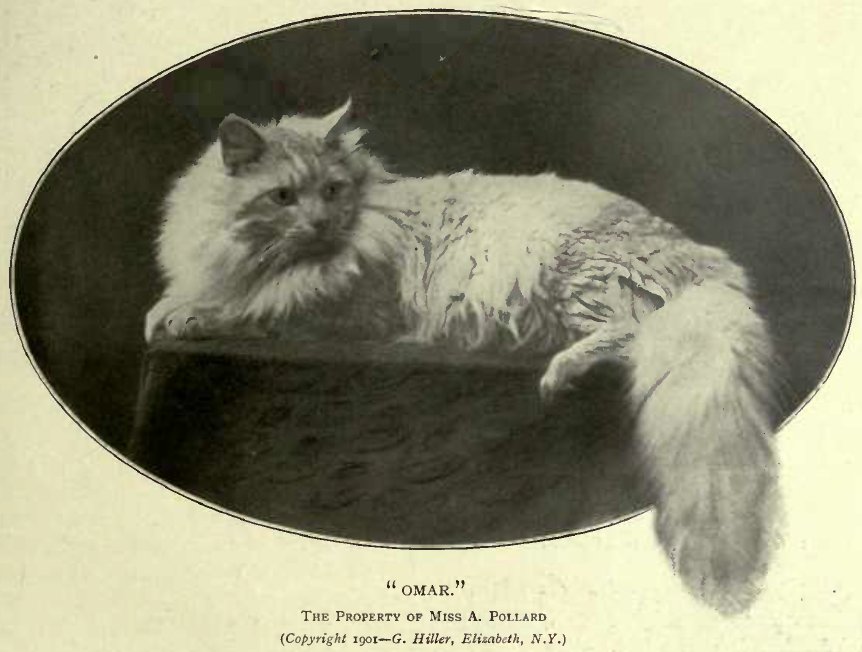
The question as to the correct colour of eyes for a chinchilla or silver cat is still a vexed question. In self-coloured cats the broad line is clearly laid down – blue eyes for whites, orange for blacks, and orange for blues; but when we come to the more nondescript cats – such as silver and smoke and tortoiseshell – there seems to be a wider margin given, and the line drawn is not so hard-and-fast. Still, I think it is always well to have some high standard of perfection in each breed, so that fanciers may breed up to it, and to my mind the bright emerald green eye is the ideal for a silver cat. I have seen very fine amber eyes which could not fail to attract admiration; but if these are admitted, then all sorts of eyes, not amber but wishy-washy yellow, will be the inevitable result. So many silver cats have eyes that may be described as neither one thing nor the other. Often one hears the remark, “ Oh ! but if you see So-and-so’s eyes in the right light they are a lovely green. “ But viewed by the ordinary eye of a critical judge, they appear an uncertain yellow.
Therefore it is best to set up a standard, and I think it is becoming an almost undisputed fact that silver cats of perfect type should have green eyes, and by green let it be understood that the deeper the tone the better will they accord or contrast with the pale silvery coat.
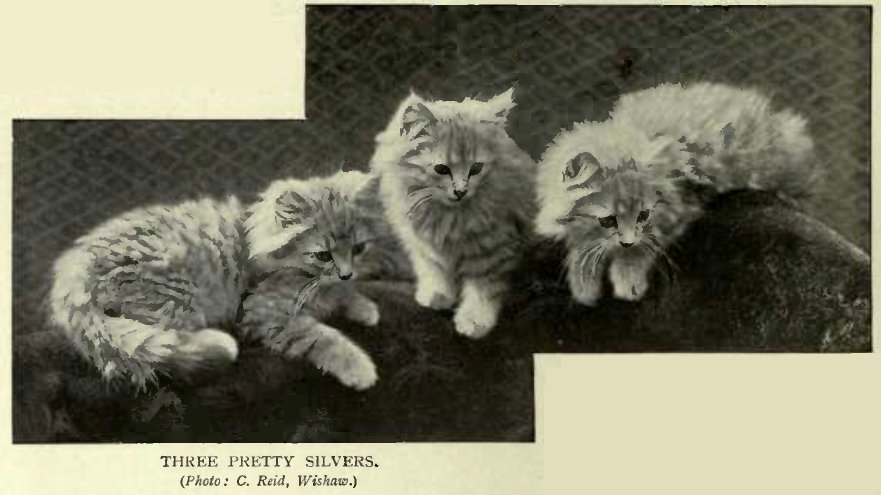
I would here impress upon fanciers the great importance of striving to obtain the large, round, full eye, which gives such expression to a cat’s face. How many of our silvers of to-day are spoiled by small, badly shaped or half-open eyes ! I do not think sufficient importance is attached by our judges to this point of size of eye. Many are carried away by the correctness of colour, and fail to deduct a sufficient number of points for a beady, badly shaped small eye.
Colour is fleeting, and with age our cats may lose the brilliancy of green or orange, but bold large eyes, placed well apart and not too deeply sunk, will be lasting points in favour of our pets.
There is one rather peculiar feature in the eyes of some silver cats. This is the dark rim which often encircles the eye. This rim decidedly enhances the beauty of the eye, and makes it look larger than it really is, and also throws up the colour. Light, almost white, ear-tufts and toe-tufts are adjuncts which go to make up a perfect silver cat. The nose is of a dull brick red, darkening slightly towards the edges.
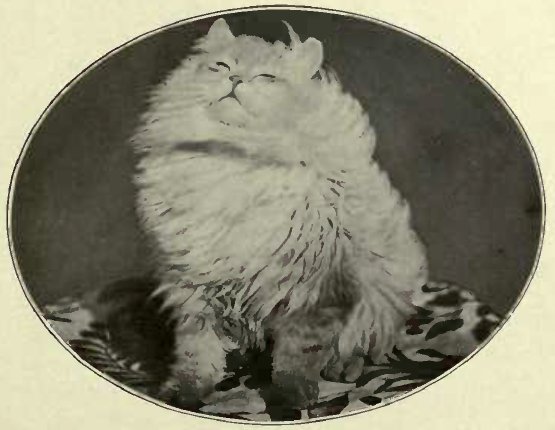
Few Persian cats suffer so severely during the process of shedding their coats as silvers, and they present a most ragged appearance at this period of their existence. The lovely fluffy light silver undercoat almost disappears, and the top markings stand out very distinctly, so that a cat that in full feather would be considered a light, unmarked specimen will appear streaked and dark after the coat has been shed. As regards the silver kittens, it is a curious fact that these, when born, are often almost black – or, at any rate, generally very dark in colour, resembling smokes. It is seldom that a silver kitten is light at birth, but gradually the markings and shadings will lessen, and perhaps just the one mite that was looked upon as a bad black will blossom forth into the palest silver. In this respect, silver kits are most speculative, but in another they are cruelly disappointing, for a kitten at three months old may be a veritable thing of beauty, and ere it has reached the age of eight months, bars and stripes will have, so to speak, set in severely, and our unmarked specimen of a silver kit develops into a poorly marked tabby cat.
I may say that if the kittens are going to be really pale silvers they will in the majority of cases have very pale faces and paws, with little or no marking, whilst the body will be fairly even dark grey – perhaps almost black. In a week or two a change takes place, as the undercoat begins to grow, and it will be noticed that the kittens become more even in colour, the contrast between their light face and dark backs will not be nearly so accentuated, and by the time they are nine or ten weeks old they will look almost unmarked. The reason for this is that the dark fur they are born with is really only the extreme tips of the hair, and as their coats grow in length this shading becomes more dispersed.
And here I will allude to the so-called threefold classification which was part of the scheme of the Silver Society, founded by Mrs. Champion in 1900. At the inaugural meeting Mrs. Stennard Robinson took the chair. Voting papers had previously been distributed amongst the members, asking for their votes on the question of establishing three classes for silvers – namely, chinchillas, shaded silvers, and silver tabbies. The votes recorded were fifty-four in favour of the threefold classification, and nine against it. So this was carried by a large majority, and the question of points discussed and settled as follows:
Chinchillas
As pale and unmarked silver as possible. Any brown or cream tinge to be considered a great drawback. Eyes to be green or orange. Value of points as follows:
Head (20)
Shape (15)
Colour of coat (25)
Coat and condition (20)
Colour, shape, and expression of eyes (10)
Brush (10)
Total . . .100 After much discussion, Lady Marcus Beresford moved, and Mrs. Champion seconded, the following definition of Shaded Silvers:
Shaded Silvers
Colour: pale, clear silver, shaded on face, legs, and back, but having as few tabby markings as possible. Any brown or cream tinge a great drawback. Eyes green or orange. Value of points:
Head (20)
Colour of coat (25)
Coat and condition (20)
Colour, shape, and expression of eyes (10)
Shape (15)
Brush (10)
Total . . . 100
From this list it will be seen that for colour the highest points are given, and that eyes may be green or orange. But during the two years which have elapsed since the formation of the Silver Society, there has been a decided desire on the part of breeders for green eyes only, and certainly our best qualified silver judges are not partial to any other coloured eyes in this variety. In an article on the colour of eyes in silvers, „Zaida“ of Fur and Feather writes: „Eye colouring threatens to become a matter of fashion. Some eight years ago we received from a first-rate fancier and exhibitor a letter respecting a chinchilla cat, which later became a great prize-winner. ‚It is useless,‘ wrote this lady, ‚to think of exhibiting her on account of her green eyes. ‚ What a change of opinion has marked the flight of eight years!“
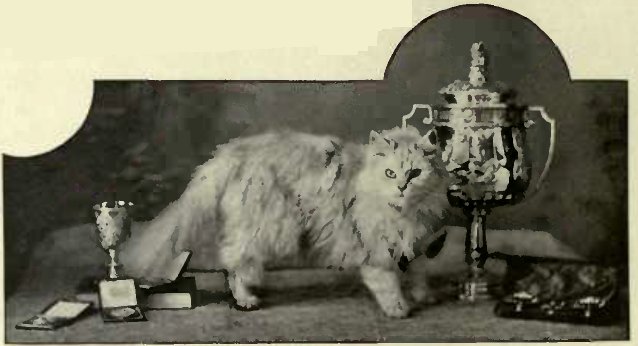
It will be observed that, as regards the description of chinchillas and shaded silvers, there is a distinction and yet no very great difference, and herein lay the difficulty of retaining these two classes at our shows. The lightest silvers were deemed eligible for the chinchilla class, and then came the question for exhibitor and judge to draw the line between the two so-called varieties, and to decide what degree of paleness constituted a chinchilla and what amount of dark markings would relegate the specimen into the shaded silver class. The cat world became agitated, exhibitors were puzzled, and judges exasperated. There were letters to the cat papers on the „silver muddle.“ Show secretaries were worried with inquiries. I recollect a would-be exhibitor writing to me sending a piece of her silver cat’s fur, and asking whether her puss should be in the chinchilla or shaded silver class; but even with her lengthy description and the sample before me, I dared not venture an opinion, and I used generally to reply to such letters by saying I did not know in which class to enter my own silver cat, and so I was going to keep him at home.
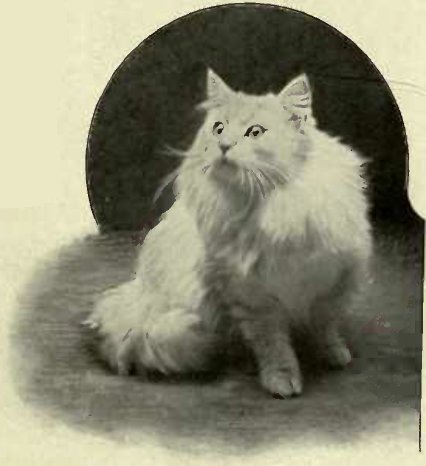
One correspondent, appealing through the columns of the papers, wrote: „Everyone knows a black or white or brown tabby, but how can we exhibitors discern between the number of shadings on our silver cats as to which class they belong? Do kindly air my grievance, and oblige.“
It was quite pathetic to see the faces of disappointed exhibitors at the Westminster show of 1901, when several beautiful creatures who had travelled many a weary mile to be penned and admired were rewarded with a “ Wrong Class“ ticket only. They were either too light or too dark for the class in which their owners had entered them, and all hope of honour and glory and golden coins and silver cups vanished into thin air ! At one show I recollect a cat was accounted by the judge a chinchilla and a shaded silver, and he came off very well with special prizes for both varieties. No doubt he really was either one or the other, or both !
It was no wonder, therefore, that a reaction set in, and exhibitors and judges felt alike that something must be done, and that, at any rate for a time, it would be better to have only the two classes for silvers and silver tabbies, and that specials might be given to encourage the lightest cats. The abolition of the threefold classification was therefore taken into consideration when the Silver Society was broken up by the departure of Mrs. Champion to America, and the Silver and Smoke Persian Cat Society came into existence, with Mr. H. V. James as Hon. Secretary.
The following are the objects of the Society: The title of this Society, which (under the name of The Silver Society) was founded in July, 1900, is „The Silver and Smoke Persian Cat Society. “
The objects of the Society are:
1. – To improve the breeds of long-haired silver (or chinchilla), shaded silver, silver tabby, and smoke coloured cats and kittens, male, female, and neuter.
2. – To guarantee extra classes for these breeds at shows supported by the Society, when necessary.
3. – To offer prizes for the said breeds at shows supported by the Society.
4. – To hold shows independently, or in conjunction with other Societies or Clubs when it shall be deemed expedient by the members.
5. – To elect specialist judges to make the awards at shows supported by the Society.
6. – To establish and maintain a standard of points for the above-mentioned breeds.
It was in March, 1902, that voting papers on this burning question were sent out to members of the new society, with the following result: For the threefold classification, 20; against, 32. Therefore, by the wish of the majority, it was decided to give up the threefold classification for the Present.
The Silver and Smoke Persian Cat Society is now in a most flourishing condition, with about 150 members. It is the fervent hope and earnest endeavour of each and all of the fanciers of silvers in the society to breed a perfectly unmarked specimen, and with perseverance we may in time puzzle the judge to decide which cat in a large class of lightly tinted silvers is the palest. We shall gradually but surely breed out the tabby markings if fanciers will, so to speak, nail the right colour to the mast and keep on striving to breed up to the perfect type.
To quote Mr. C. A. House: „What is wanted is for breeders to work on standard lines, and not push forward with such persistency their own pet particular whims. All that is required is for breeders to be determined to breed honestly and consistently for what the standard advocates, and leave severely alone all excesses and exaggerations. Let us have chinchillas free from markings by all means, but let us keep our shadings, our silver colour, remembering that pure silver is of a bluish tinge, and is not the whitey-brown article some would have us accept as the ideal in chinchilla cats.“ The same authority, writing on the threefold classification, says: „I have always maintained that the threefold classification in silvers was a mistake, and the majority of breeders, I am pleased to know, are coming round to that view. My opinion, when first enunciated, was not popular. With some it is not to-day. But many who at one time could not see the force of my arguments now do so, and there is a more general feeling that the craze for self silvers is not conducive to the welfare of the silvers as a breed.“
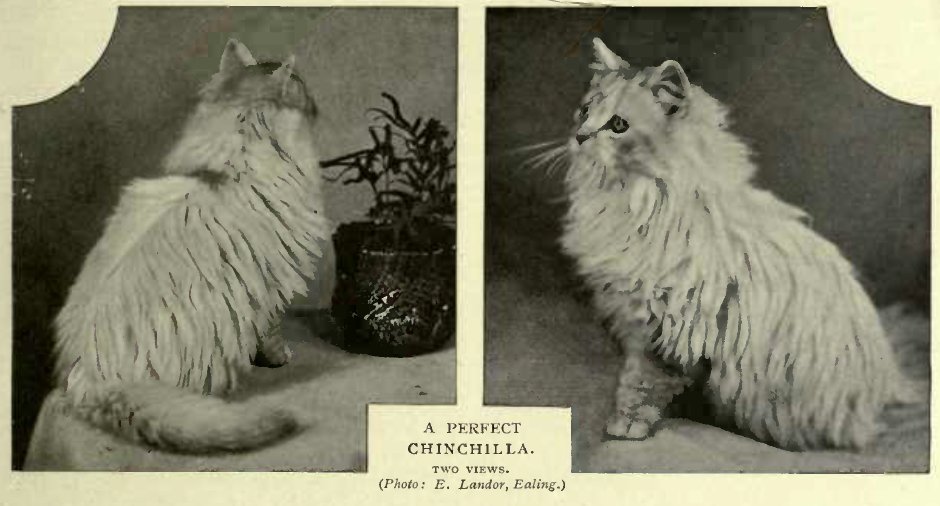
Amongst the well-known breeders, fanciers, and exhibitors of silvers in the present day, I may mention Lady Marcus Beresford, who owns some beautiful specimens of the celebrated „Lord Southampton“ strain. A handsomer type of silver female cannot be met with than „Dimity,“ bred by Miss Cochran, and presented by her to Lady Marcus Beresford. Lady Decies is the proud possessor of the incomparable „Zaida,“ whose record of wins is a marvellous one. As all the cat world knows, „Zaida“ is accounted the lightest and most unmarked specimen in the fancy. Mrs. W. R. Hawkins has bred some wonderfully good silvers, and was the owner of „Sweet Lavender,“ which has been acknowledged as one of the best of this breed that ever existed. The following are the principal silver breeders: The Hon. Mrs. McLaren Morrison, Mrs. G. H. Walker, Mrs. Neild, Mrs. Russell Biggs, Mrs. Wellbye, Mrs. Martin, Mrs. T. Drake, Mrs. Cubitt, Mrs. Marriott, Mrs. Balding, Mrs. Poole, Mrs. Ormerod, Mrs. Fawsett, Miss White Atkins, Miss Snell, Miss Horsman, Miss Dell, Miss Meeson, The Hon. Philip Wodehouse, Miss Chamberlayne.
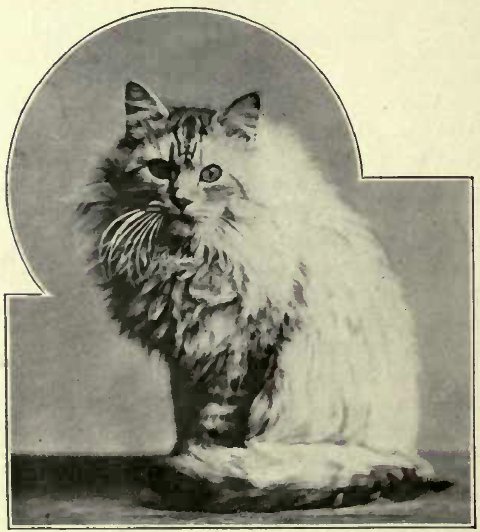
During the last few years a very large number of silver cats have been placed at stud, but we may regard three cats as the founders of the breed or as the pillars of the silver strain – namely, „Silver Lambkin,“ „Lord Southampton,“ and „Lord Argent.“ To these worthy ancestors a very large proportion of the silvers of to-day can trace their lineage. But this noble trio is naturally being superseded by such stud cats as „Silver Starlight,“ „Tintagel,“ „Cambyses,“ „The Absent-minded Beggar,“ „Pathan of Dingley,“ „Jupiter Duvals,“ „St. Anthony,“ „Rob Roy of Arrandale“ „The Silver Sultan.“ and many others. There is, therefore, now no excuse for in-breeding, which used to be carried on to a great extent when so limited a number of sires were forthcoming. To indiscriminate and injudicious in-breeding may be largely attributed the great delicacy amongst silver cats. There is no doubt that the number of fatalities among silver kittens is far in excess of that of any other breed. Then, again, the size of silver cats compares unfavourably with others, and they are wanting in muscle and bone.
We do not want huge, coarse, heavy silvers, but breeders and judges sometimes show an utter disregard for size and strength, and the consequence is we see a number of ladylike looking studs that fail miserably in these very essential points.
Breeders should aim at the happy medium between the liliputian and the leviathan, but not be content unless their silver studs turn the scales at 10 lb. As regards the mating of silvers, a broad line to lay down is to avoid tabby markings. It is for this reason that smokes have been wisely selected by most breeders as the best cross for a silver. It is more than probable that in many cases some nondescript sort of kittens will be the result. These sort of light smokes are exceedingly pretty cats and make fascinating pets, but they are useless for breeding purposes or exhibiting. I have known of some handsome specimens that have wandered from class to class, only to be disqualified in each and either, and it was a case of, „When judges disagree, who shall decide?“
Several experiments have been tried of crossing a white Persian with a silver in order to get pale coloured kittens, but this appears seldom to succeed unless the whites have silver blood in them. Some breeders have tried blues with silvers, but there is the danger of introducing the grey blue undercoat which gives such a smudgy appearance to a silver and is suggestive of a badly coloured smoke. It does not at all follow that the mating of two light silvers will produce light coloured and unmarked kittens, yet this cross and the smoke are the safest. It must be a work of time, as we have before said, to breed out the tabby markings of many generations.
The name of Mrs. Balding is as well known to breeders of silvers of the past as it is at the present day. In the past, however, it was as Miss Dorothy Gresham this enthusiastic fancier won her laurels. I well remember the sensation caused by the appearance in the show pen of the „Silver Lambkins“ at the Crystal Palace in 1888. To breeders, exhibitors, and cat fanciers generally the following account of chinchillas from the earliest days, specially written for this book by Mrs. Balding, should be exceedingly interesting:
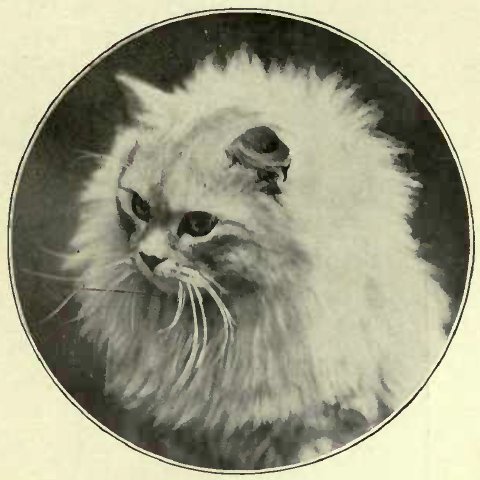
„There is probably no variety of longhaired cat which has caused so much discussion, notwithstanding that, with the exception of the light-coloured reds, which have been designated ‚creams,‘ the chinchilla is the cat which has most recently gained distinction as a separate variety. The notoriety which the chinchilla enjoys has been in great part brought about by the delicacy of its appearance and the difficulty that has been experienced in the production of a perfect specimen. Many cats are called chinchillas and are exhibited as such, often winning prizes, but very few indeed are of the pale silver tint, with bright emerald eyes, and with no bars or stripes on the legs or head.
„The chief subjects that have been under discussion in connection with the chinchilla cat have been the colour of eyes and the shade of the coat; but, with regard to the former, I think it must be acknowledged that green is a more suitable accompaniment to silver than yellow or orange, and, as regards the latter, that silver, with dainty sheen evenly distributed, is more to be desired than a patchy grey, dull in hue and unattractive to the eye. As a matter of fact, these shaded grey specimens are in reality only ill-marked silver tabbies. They must, however, not be altogether despised, as they have been the stepping-stones which have led to the creation of the chinchilla.
„It is something like twenty years ago that, amongst the competitors in the classes for long-haired tabbies at the Crystal Palace and other important shows, was occasionally to be seen an alien with the ground colour of the silver tabby, but with very few stripes on the body. These cats were evidently sports from the silver tabby, so much so that the class for that section was the only one open to them; and, although they invariably showed great quality, breeders were loth to exhibit them in the medley of different coloured tabbies, where one of their chief beauties – the absence of stripes – became a disadvantage. Their only chance of distinction lay in putting in an appearance at provincial shows, where the authorities were sometimes to be induced to attach two cat classes to the rabbit division – one for longhaired of any colour, and the other for short-haired. In this indiscriminate assemblage, no colour having been stated, chinchillas when present wrought great havoc, although it cannot be denied that the judges of the day gave precedence to a well – marked silver tabby.
„Amongst these outcasts was a cat of striking beauty, whose like has not been seen again. This was ‚Sylvie,‘ of unknown pedigree, owned by the late Mrs. Christopher, at whose death she became the property of the late Miss Saunders, of Peterborough. A beautiful portrait of this exquisite chinchilla is given in Mr. Harrison Weir’s book ‚Our Cats.‘ When judging at the Crystal Palace in 1886, this connoisseur and judge of worldwide repute awarded her first prize, medal, and special for the best long-haired cat, getting over the difficulty of her silvery, unmarked coat by calling her a very light blue tabby, though the puzzle was to find the tabby.
„Another chinchilla of the early ‚eighties was Miss Florence Moore’s ‚Queenie,‘ who would, had chinchilla classes been provided at that time, have been loaded with championships and honours. In colour she was as light as any of our present-day celebrities, and might easily, from her freedom from markings, have earned the dubious compliment of the uninitiated so highly prized by owners of chinchillas of being mistaken for a grubby white. Miss Florence Moore, who later on had one of the best and largest catteries in the country, bred ‚Queenie‘ from her ‚Judy, ‚ winner of many first prizes, a heavily marked silver tabby of Mrs. Brydges‘ noted breed, and ‚Fez,‘ a light silver cat with indefinite stripes.
„Mrs. Brydges can claim the distinction of having owned, something like half a century ago, some of the first long-haired cats ever imported into England. A coincidence worthy of note is that though there is no record of her having bred or possessed a chinchilla, two never-to-be-forgotten pairs of chinchilla kittens – Miss Florence Moore’s ‚Chloe‘ and ‚Dinah,‘ winners of first and medal on three successive occasions at the Crystal Palace, Brighton, and Bexley, 1887 (they being the only chinchillas at any of these shows), and Miss Gresham’s ‚ Silver Lambkins,‘ who swept the board in 1888, winning the specials at the Crystal Palace from forty-six pairs of other competitors of all colours – could in each case trace descent to the Cheltenham stock ‚Chloe‘ and ‚Dinah,‘ through the afore-mentioned ‚Judy‘ and the ‚Silver Lambkins,‘ through their sire ‚Rahman,‘ also bred by Mrs. Brydges.
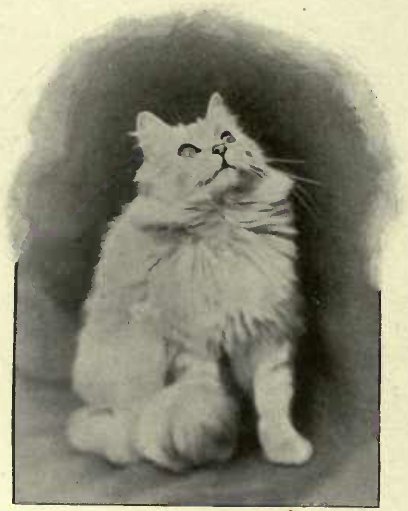
„Still more remarkable, these two couples of youthful prodigies were first cousins, on the other side of their pedigrees, the noted „Fluffy II.‘ and ‚Beauty‘ being bred by Mrs. Vallance.
„‚Chinnie,‘ the Mother of chinchillas, is familiar in name to every breeder of this lovely variety, and the following letter, of the early ‚eighties, relating to her birth and buying, will perhaps prove interesting to the up-to-date silver fancier. It is copied from the original in the possession of Mrs. Vallance. One guinea appears to have been a price to talk of in those days. Now, one would be tempted to hide the fact of such a small amount, and if a specimen were offered to us at this low figure we should certainly desire it to be sent on approval.
The Vicarage, Sandal Mayner, near Wakefield,
October 14th, 1882. ‚To Mrs. Vallance.
‚Madam
The kitten I have to sell is quite pure bred. The mother I bought for £1 1s. when quite a kitten from prize parents. The father is one we bred partly from Mrs. Radford’s breed and partly from a splendid torn cat that was found living wild at Babbicombe, and that we had in our possession for some months, but unfortunately he is lost again now – I am afraid permanently. I think this kitten promises to be very like the mother. She is very handsome and has good points – brush, ear tips, and so on – but I consider her rather small. But the kitten may be finer, as the father is a large cat. Miss Grant’s are related to ours on the father’s side, but Mrs. Radford’s very distantly, if at all.
‚ I do not think these Angora kittens are delicate. We have never failed in rearing them. The more new milk they have, and the better feeding, the finer cats they are likely to make. We do not have much trouble in keeping ours at home, as we live some distance from the village. We always give ours their principal meal at 6 p. m., and keep them shut up in a hay-loft until next morning. If you have a box wherever the kitten lives, with sifted sand or cinders in it, kept in a corner, you will find that the best way to ensure habits of cleanliness. If I hear nothing from you to the contrary I will send the kitten on Wednesday morning, 19th, by the early train from Derby station; and if you are not satisfied with the kitten I am willing for it to be returned within a day or two, if the return journey is paid and I am let know beforehand when to expect it.
‚ I remain, yours truly,
‚ Grace Hurt. ‚
A letter redolent of lavender and old-world deliberation, but words of wisdom for all that. The reported delicacy of long-haired cats would trouble us less if we had more of the new milk and hay-loft system. Raw meat, raw eggs, new milk, fresh air, grass, and water are the sole ingredients required to rear the most valuable kitten.
„‚Chinnie’s‘ size is another interesting point. She grew to medium weight, but was remarkable for symmetry of form rather than bulk.
„Some of the loveliest chinchillas are small, but ‚Nizam,‘ ‚Tod Sloan,‘ ‚Ameer,‘ ‚Silver Lambkin,‘ ‚Laddie,‘ ‚Lord Argent,‘ ‚Silver Mist, ‚ ‚Cherub,‘ and ‚St. Anthony‘ stand out as being as large, or larger, than any cats of other colours, and the majority of them have also the purity of colour, broad heads, and short legs so often lacking in large cats. The legginess and want of quality which frequently accompanies size doubtless cause our leading judges to deem it of little account.
“ The name chosen by Mrs. Vallance for her new acquisition proves that even in those early days the term chinchilla was in vogue. ‚Chinnie’s‘ wins were third Maidstone, Sittingbourne, V. H. C. Oxford, Maidstone. Her charming little mate ‚ Fluffy I., ‚ a very pure silver with undecided tabby markings, also showed the quality of coat and cherub face for which their descendants have been unsurpassed. He was bred in 1883 by Miss Acland from imported cats, and won first and medal at Maidstone, Cheltenham, and Ealing, second Ryde, V. H. C. Crystal Palace, Oxford,, and Lincoln. His career ended in 1886, when he disappeared. Tradition whispers he was destroyed in the village.
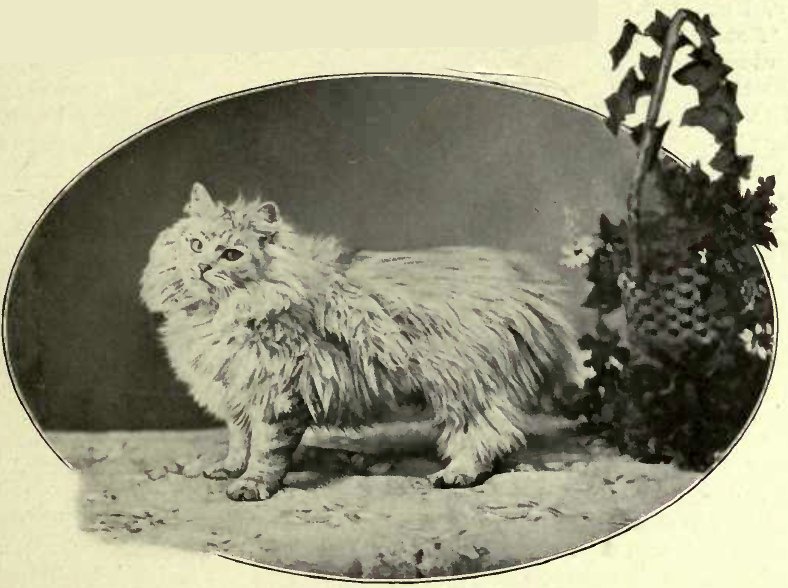
„In April, 1885, ‚Chinnie‘ produced a litter by ‚Fluffy I., ‚ two members of which – ‚Vezzoso‘ and ‚Beauty‘ – have earned undying fame in the annals of chinchilla history. ‚Vezzoso, ‚ a marvel of lavender loveliness, in his one brief year of existence won first in the open class and silver medal for best in show Albert Palace, 1885, first Louth, Maidstone, second Frome, third Lincoln.
„In fatal 1886 ‚Vezzoso, ‚ who belied his exquisite appearance by being very un-domesticated, like his maternal grandfather the wild cat of Babbicombe, roamed to return no more. ‚Lost in the woods‘ is his epitaph.
„An even more tragic fate befell Fluffy II.,‘ the 1886 son of ‚Fluffy I.‘ and ‚Chinnie, ‚ who after winning first Crystal Palace, first and silver medal for best in show Brighton, second Albert Palace and Ealing, and siring the two before-mentioned kittens of the year, died in 1887 from the effects of an accident in which he was internally injured. Thus within little more than a year Mrs. Vallance lost three of the most promising young cats anyone could possess. At the time their owner scarcely realised their value, and allowed them absolute freedom, with such sad results.
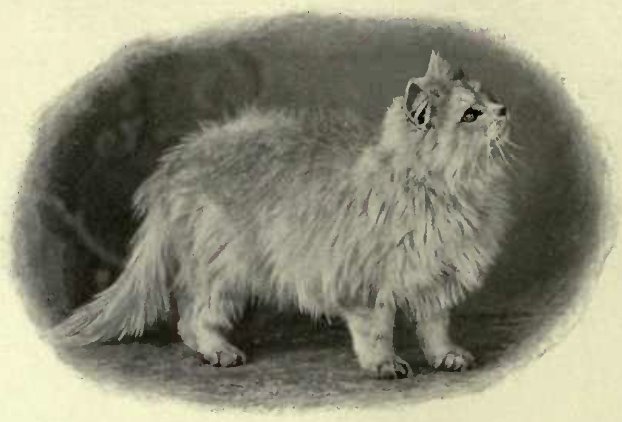
„But undoubtedly the best result of the ‚Fluffy‘ and ‚Chinnie‘ alliance was ‚Beauty, ‚ from whom, as already stated, came the ‚Silver Lambkins. ‚ As a kitten she became the property of Miss Howe, of Bridgyate, near Bath, and later, by a breeding arrangement with the Miss Greshams (now Mrs. Bridgwater and Mrs. Balding), had three remarkable litters of chinchilla kittens, the first by ‚Rahman,‘ who shortly afterwards strayed from home and was lost. This was the litter which produced four queens, including the two ‚Silver Lambkins,‘ and which (with the exception of one renamed ‚Mimi, ‚ who went to America with her owner) all unfortunately died.
„The second of Bridgyate ‚Beauty’s‘ litters was by Mrs. Shearman’s ‚Champion Perso,‘ a magnificent light smoke with remarkable coat and wonderful mane, winner of a large number of first and special prizes. In this lot was a torn kitten destined to be a pillar of the chinchilla stud book, the ‚Silver Lambkin,‘ named after his deceased half-sisters. The chief beauties of this remarkable cat are his size and muscular frame, the length and thickness of coat, and the enormous frill inherited from ‚Champion Perso, ‚which spreads Elizabethan like round his shoulders and falls to his feet in front, a cascade of silvery white fluff several inches long. To ‚Perso‘ may be traced in some degree ‚Silver Lambkin’s‘ success as the sire of unmarked cats, and to ‚Beauty‘ their pale colour, green eyes, and perfect shape, which have won for her descendants by ‚Lambkin‘ upwards of 150 first prizes.
„At the time ‚Silver Lambkin‘ was bred there was no chinchilla stud cat, and no one had thought of trying to breed chinchillas, for whom, as before stated, there was no encouragement at shows or at home.
„The third litter which brought further fame to ‚Beauty‘ was by ‚Bonny Boy,‘ who in the early ’nineties was placed second in the class for silver tabbies at the Crystal Palace, but was considered by admirers of chinchillas to be the best cat in the whole show – an honour, however, which came to him a month later when at Brighton he was awarded the special for the most perfect specimen of the Persian breed in the exhibition; he had previously been claimed at Sydenham, by the Hon. Mrs. McLaren Morrison, at his catalogue price of £6 6s., and was afterwards renamed ‚Nizam.‘
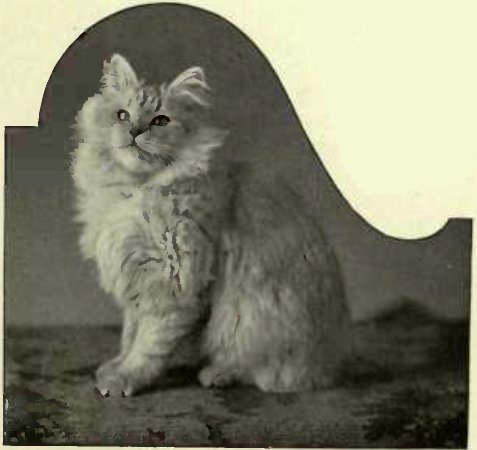
„The only information that could be obtained about this beautiful cat was that he was exhibited by Mrs. Davies and that he came from Wales. Report suggested that he was imported, but there is no evidence of any chinchilla cat having been sent from abroad.
„‚Beauty’s‘ litter by ‚Nizam‘ consisted of one male and four females, two of which, as ‚Twin and I‘ – so named because they were so exactly alike – won first prizes and medals wherever shown. Another was sold by me to Mrs. Martin, which, as ‚Lambkin Queen,‘ was the foundation of the afterwards noted cattery at High Wycombe. ‚Twin‘ eventually went to Mr. Lawton, who renamed her ‚Queen of the Mist.‘ Mated with ‚Silver Lambkin‘ she produced ‚Sea Foam, ‚ the first chinchilla to win a prize in a class solely confined to cats of the colour. There was an amusing coincidence about this win, inasmuch as after considerable trouble had been taken to get a separate class for chinchillas, the judge gave the first prize to a heavily marked silver tabby, thus totally ignoring the desired object. This occurred at the Crystal Palace in 1893 or 1894. The two first classes ever given for chinchillas were this one and that given at Cruft’s first cat show at Westminster, held in March, 1894.
„The next that was heard of ‚Twin‘ was that she had succumbed from the effects of swallowing a needle. ‚I,‘ registered as ‚I, Beauty’s Daughter,‘ remained the whole of her lifetime at The Lodge, Penge, where, when paired with the pale blue ‚Champion Bundle,‘ ‚Southampton Duchess‘ was the result, the latter the mother of the ‚Silver Lambkin’s‘ most sensational son ‚Champion Lord Southampton,‘ who was sold by Mrs. Greenwood for £60, when he became the property of Lady Decies, this being probably the highest price that has ever been given in England for a cat of any variety. ‚Champion Lord Southampton,‘ who has been a very great winner, is remarkable for the lightness of colour and slight markings of his kittens, this being undoubtedly due to the strain of blue in his blood. Many beautiful cats own him as sire, notably Miss Leake’s ‚Seraph,‘ Mrs. Bluhm’s ‚Silver Sultan,‘ Mrs. Neild’s ‚Absent-minded Beggar,‘ Miss White Atkins‘ ‚Tintagel,‘ Mrs. Tynvhitt Drake’s ‚Musa,‘ Mrs. Rickett’s ‚Empress Josephine,‘ Mrs. Earwaker’s ‚Buxton Cloud,‘ Mrs. Geo. Walker’s ‚Woodheys Fitzroy,‘ Mrs. Barnes‘ ‚Nour-mahal,‘ winner of the Chinchilla Club challenge for the best kitten, 1899, and a daughter of ‚ChampionFul-m e r Z a i d a, ‚ shown by Lady Decies at the Crystal Palace in 1901, also ‚Green-eyed Monster. ‚
„Whilst speaking of ‚Tintagel‘ it may be remembered that he sired a charming, litter exhibited by Mrs. Poole, which were first at the National Cat Club show at the Crystal Palace, and one of which won as a single kitten at the Botanic Gardens in 1902.
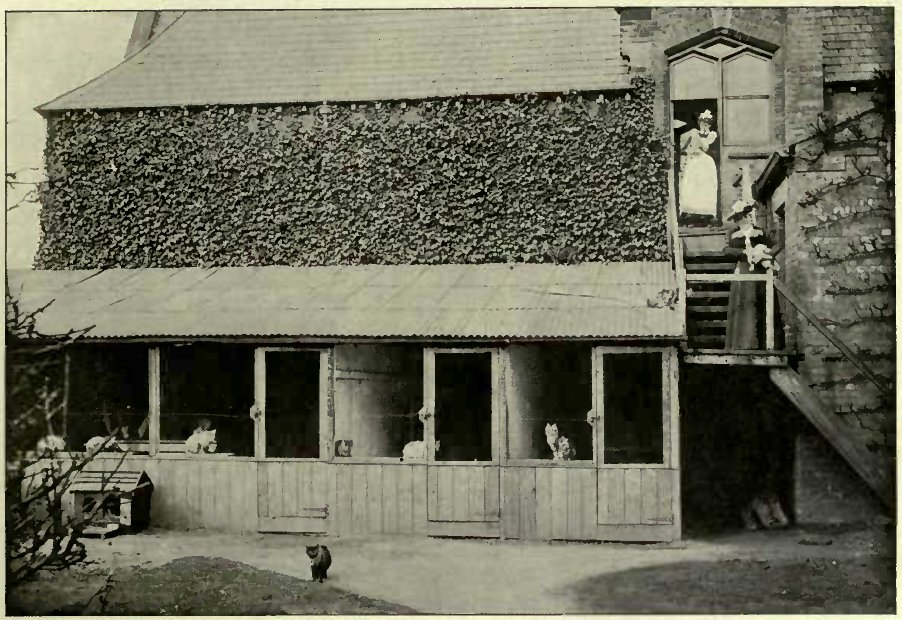
„Other famous progeny of ‚Silver Lambkin‘ are ‚Silver Mist, ‚ ‚Watership Caesar‘ (who won the gold medal at Boston, U. S. A., for the best cat in the show, 1902), ‚Silver Tod Sloan‘ ‚Silver Owl, ‚Mrs. Bluhm’s ‚Silver Lily,‘ ‚Silver Squire,‘ and ‚Mowgli,‘ the last named bred by Mrs. Dunderdale, but later the property of Mrs. Smyth, of Forest Hill, one of the most enthusiastic admirers of chinchillas, who has in her possession the stuffed figure of ‚Beauty.‘
„A chinchilla that gained a considerable notoriety was ‚Sweet Lavender,‘ the property of Mr. Hawkins. This was a beautiful specimen, very light in colour. The latter was also a distinctive feature of the Hon. Mrs. McLaren Morrison’s ‚Ameer,‘ a son of ‚ Lambkin Queen, ‚ who stands prominently forward as one of the most perfect of his kind. Mrs. Martin’s ‚ St. Anthony,‘ whose name appears in the pedigrees of several winners, is a brother of ‚ Ameer.‘
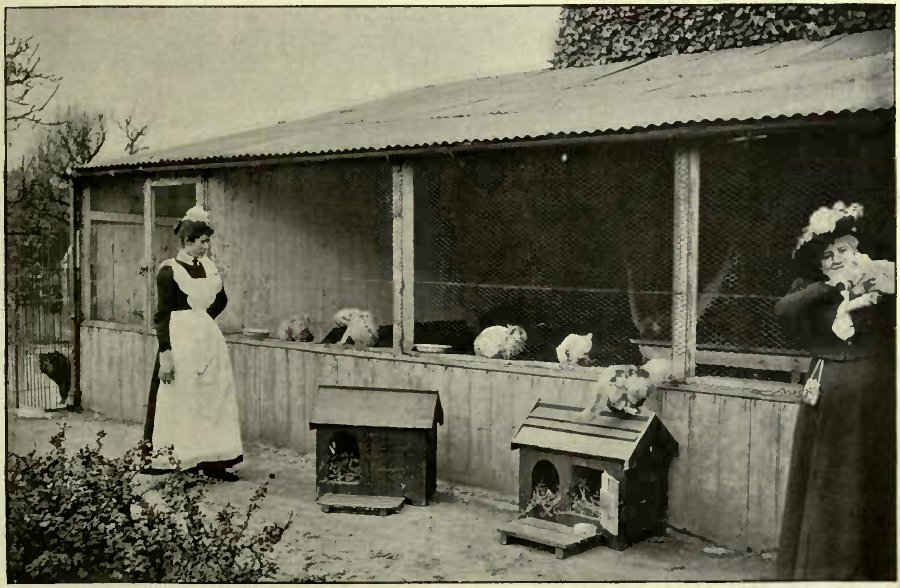
“ As the sire of Lady Decies‘ ‚ Champion Fulmer Zaida,‘ the most lovely chinchilla female that has ever been seen, ‚Silver Laddie,‘ who is now unfortunately gone to his happy hunting-grounds, can claim to have been one of the most noted of sires, more particularly as he was also the father of many others of great value, prominent amongst which were Miss Horsman’s ‚Aramis,‘ Miss Snell’s ‚Starlight,‘ ‚Silver Cherub,‘ ‚Lady of Quality‘ (one of the most perfect chinchillas ever bred),‘ Charterhouse Pixie ‚ (the dam of ‚Tod Sloan‘), and numberless others.
„Not only as a chinchilla, but when competing with all breeds of cats, both long and short haired, ‚Champion Fulmer Zaida‘ has proved her excellence, and has on more than one occasion secured the cup at the Crystal Palace for the best cat in the whole show. She was bred by Mrs. Bluhm, one of the pioneers of chinchillas, and, it is stated, has now won 136 first and special prizes, and that Lord Decies has refused £90 for her.
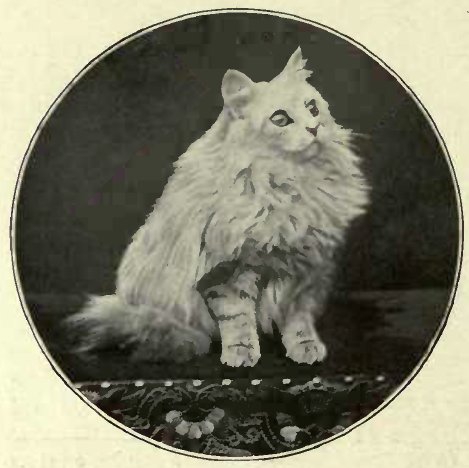
„‚Zaida‘ has also produced some first-class kittens, amongst which was Miss Stisted’s ‚Pearl,‘ the owner of the latter pretty queen being a most devoted admirer of the chinchilla and sparing no expense to further its interests.
„Mrs. Bluhm’s strain of chinchillas are all very light in colour, and show great quality, which may also be said of those of Mrs. Wellbye, whose ‚Silver Lotus‘ and ‚Veronica,‘ daughters of ‚Silver Squire‘ and ‚Dossie,‘ did so much winning in their day.
„Miss Meeson has also shown considerable enthusiasm in her endeavour to reach the ideal, her best efforts having resulted in ‚Jupiter Duvals,‘ of wide fame.
„Two clubs have been formed in connection with the chinchilla cat – one, the Silver Society, embraced other coloured cats besides the chinchilla, this eventually becoming the Silver and Smoke Persian Cat Society. It was owing to this club encouraging shaded, or marked, silver cats and orange eyes that the Chinchilla Club was formed by Mrs. Balding. This Club has the honour of having as patron H. S. H. Princess Victoria of Schleswig-Holstein, who owns and exhibits some beautiful chinchillas, and Lord Decies as vice-president.
„The Chinchilla Club gives its support and specials, besides guaranteeing classes at any show whose management apply The conditions on which the specials are presented is that the cats to which they are awarded must be the property of members of the club, prize-winners in their respective classes, and registered cats.
„The club prizes usually consist of half a guinea in each class, and the more coveted Special of the club’s badge for the best chinchilla of either sex. Badges were selected in place of the ubiquitous medal, because most of the dainty professional beauties very soon obtain a considerable number of the latter, and smart little badges were more appreciated.
„The club’s present challenge trophy for chinchilla kittens is a solid silver model of ‚Silver Lambkin,‘ offered by the hon. secretary for competition amongst its members; it is also open to members of the National Cat Club, in acknowledgment of the compliment paid by the latter to the original in choosing his statuette to surmount their challenge cup. The little history of the origin of this special has never appeared in print before, and as I was not present at the committee meeting referred to,‘ I tell the tale as ‚twas told to me.‘
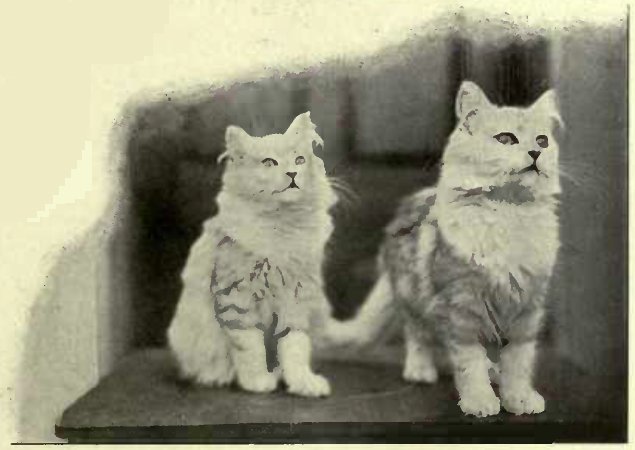
When the challenge cups of the National Cat Club were designed in 1897, it was decided that the beauty and interest attached to them should be enhanced by immortalising on each the most representative cat of the long-haired and short-haired varieties. For the latter the great‘ Xenophon‘ was chosen without hesitation. Then came the more difficult task of deciding upon a recipient for the distinction from the long-haired ranks, which claim so much of the beauty and wealth of winnings of the cat world as to render the singling out of one a matter of consideration. To hasten the termination of the discussion Mrs. Stennard Robinson sent for a collection of cat photographs which had been left to her by the late Miss Portman, the well-known’Rara Avis‘ of the Lady’s Pictorial. Amongst these the hon. secretary of the N. C. C. pointed out one – with no name attached – as the most beautiful photograph of the lot. This was recognised by most of the committee as being‘ Silver Lambkin,‘ so the honour fell to him.
„By some error at the makers‘ the longhaired cat was placed on both challenge cups, and it was determined by the club that the superfluous model which had to be removed and replaced by ‚Xenophon‘ should be mounted as a letter-weight and given as a challenge prize for kittens, to be won three times before becoming the property of the winner. After some keen competition, covering about half a dozen shows, Mrs. Martin won it outright in 1899, when it was replaced by the present exactly similar model.
„The endeavour of the Chinchilla Cat Club, of which all the leading breeders and most successful exhibitors are members, is to continue the work that has been done to improve chinchillas, and to produce a new variety the colour of the palest shade of the fur (dyed) known as‘ blue fox,‘ or a very light shade of pigeon blue. Without doubt such a result can be obtained by careful selection and -‚the little more.‘ Darwin’s words on the subject of selection are attractive to all owners of live stock. He says: ‚Improvement is by no means due to crossing different breeds. All the best breeders are strongly opposed to this practice, except sometimes amongst closely allied sub-breeds. And when a cross has been made, the closest selection is far more indispensable even than in ordinary cases. If selection consisted merely in separating some very distinct variety and breeding from it, the principle would be so obvious as to be hardly worth notice ; but the importance consists in the great effect produced by the accumulation in one direction during successive generations of differences absolutely unappreciable by an uneducated eye.
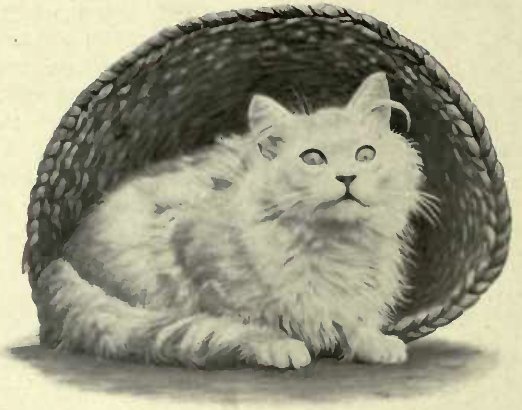
Not one man in a thousand has the accuracy of eye and judgment sufficient to become an eminent breeder. . . . Few would readily believe in the natural capacity and years of practice requisite to become even a skilful pigeon fancier.‘
„The Chinchilla Cat Club is also prepared to encourage cats of new colours, which should now be not so very difficult to produce, considering the points that have been brought out in those varieties that were well known, the latter showing that it is possible to breed to a standard if judgment is used in the endeavour to do so. Some of us remember the time when a blue cat, either long- or short-haired (now the largest classes), was a rata avis when Mrs. Lee’s ‚Meo‘ was the only Siamese at the Crystal Palace show, smokes an equal oddity, blue eyes in a white cat a comparatively unnoticed point, and cream-coloured cats entirely unknown.
„The colour of the chinchilla has been bred in various ways. In bygone days, when chinchilla cats were flukes or freaks and few and far between, methods which would now be considered somewhat eccentric were resorted to by the first breeders of the colour. The useful tortoiseshell, from which black, red, cream, or tabby cats can be got, was pressed into the service, and, paired with a silver or light blue tabby not too clearly marked, would occasionally, amid the multi-coloured kittens for which tortoiseshells are proverbial, throw a medium chinchilla or light silver tabby, which with careful selection might, a generation or two later, develop into something approaching a good chinchi la.
„But it is, perhaps, more difficult to foretell with cats than any other animal what the result of pairing will be with anything like certainty. This particularly applies to the ordinary English cat, as it is impossible to guess at the mixture of different-coloured creatures which have preceded it, and any of which may influence the progeny of its descendants. A fancier who would produce any particular specimen must, amongst other gifts, be equipped with the patience of biblical celebrities and prepared to wait seven years, as one enthusiast actually did before arriving at the fulfilment of his desires in the shape of a well-marked tabby kitten.
„With pedigree cats, of course, the chances, of unexpected traits reappearing in their progeny are considerably lessened, and, given desirable connections on both sides of some years‘ standing, the personal attributes of a coming litter may be predicted more or less successfully. One of the loveliest of smokes – the correct black, with white undercoat, without the shadow of a stripe – was from a brown tabby queen, from brown tabby parents, and a chinchilla bred from a chinchilla dam and smoke sire. Again, a brown tabby with white paws, whose appearance did not suggest the bluest of blood, mated with the same chinchilla sire, produced in a litter three chinchillas and two faintly marked silver tabbies, which would nowadays have been styled ’shaded silvers‘ by followers of the dubious hue. Needless to say, these instances are not given to encourage the idea of breeding chinchillas from brown tabbies, but as illustrations that just as the results of pairing a cat with one of nondescript pedigree cannot be guessed, so in an animal carefully bred for generations so indelibly have the characteristics of the breed or variety been stamped upon it by past ancestors that it is practically impossible for them to become obliterated or submerged.
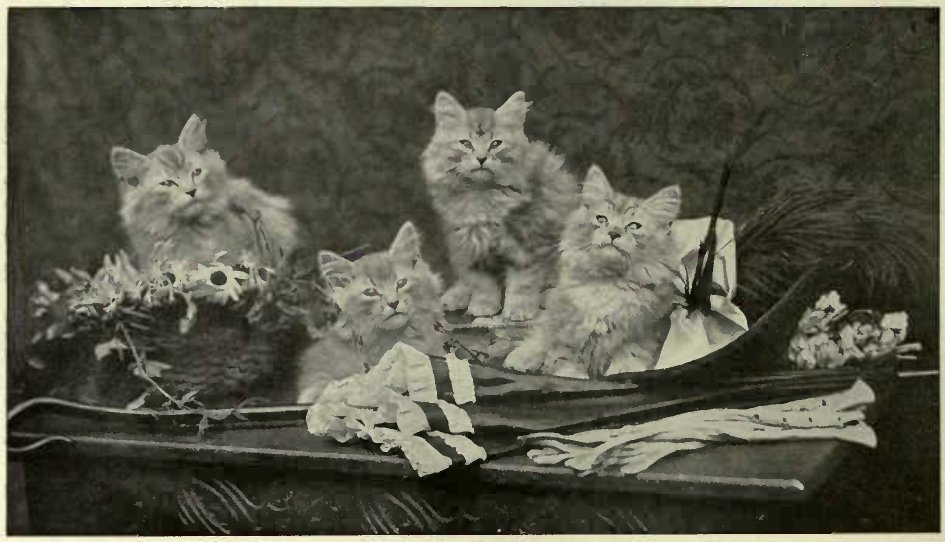
Thus the type once fixed survives, though it be by the aid of the most incongruous connection, such as a brown tabby. Had the latter been the patrician bred from progenitors of her colours, and the chinchilla been the one of doubtful lineage, the result must, of course, have been reversed, and the kittens, in all probability, would have followed the brown tabby strain. If neither parent cat when of distinct varieties can boast a particularly dominant strain, the offspring naturally partakes of the peculiarities of both.
„Colour, in chinchillas, is the most important point. It should be of palest silver, lavender tint, and lighter – in fact, practically white – at the roots. There should be no dark blotches or stripes or brown tint on the back or about the nose. A rusty hue is, however, sometimes caused by the action of the sun or wind. As regards bars or stripes on head, these should be as few and light in colour as possible, with a view to breeding them out altogether in the future.
„The coat should be long and thick, of fine, soft texture, much thicker and longer round the neck, forming a decided frill and mane, the latter reaching well down the fore legs. It should also be longer on the hinder part of the thighs, forming culotte, and very bushy on the tail, which should be short and wide. The legs should be slightly feathered, with tufts of hair between the toes. There should also be tufts in the ears, which should be very small and set low.
„The head should be wide at the forehead and short in the muzzle, well filled up below the eyes, giving it a round appearance. The eyes large and luminous, in colour emerald green with black lids. Green and yellow-mixture is permissible, but not so picturesque as the green; yellow in the eyes is not desirable. In shape the chinchilla should have a level back, and be only slightly long in the couplings. The legs should be short, with round paws, the latter well padded. When in full coat the hair should nearly reach the ground and the frill envelop the back of the head, making a very fascinating whole.“
The following is the standard of points as drawn up by the Chinchilla Cat Club. It is also used in America as a basis for criticism:
1. Colour Of Coat : Palest silver, lavender tint preferred, nearly white at roots. No dark stripes, blotches, or brown tint. Darker tips to the long hairs give the coat an appearance of being lightly peppered with a darker shade. The whole appearance of the cat to be very pale .. .. .. .. .. 30
2. Coat : Long and thick . . . . 20
3. Texture Of Coat : Fine and soft . . 10
4. Tufts of hair inside and round the ears and between the toes .. .. 10
5. Head : Broad and round; forehead wide, ears small and set low, nose short . . . . .. 25
6. Shape: Back level, not too short; legs short, paws round ; brush short, wide, and carried low .. 20
7. Eyes : Large, luminous, and green in colour (if green mixed with yellow, 5 points only allowed) . . 10
To breeders of silver Persian cats an article by Mrs. Neild will be valuable and instructive. Mrs. Neild has made, so to speak, a speciality of silvers, and owns two noted silver studs – the „Absent-minded Beggar“ and „Lord Hampton.“ There are always some good silver queens, and very frequently some choice kits, disporting themselves in the well-arranged catteries at Hart Hill, Bowdon, where Mrs. Neild has a kennel of Borzois and a cattery of silvers.
This is what Mrs. Neild says regarding the breeding and rearing of silver Persian cats :“Perhaps of the many varieties of Persian cats – and, indeed, they are a goodly number as they now appear on our show catalogues and schedules – the silvers may claim their owners to be the most sporting of cat breeders. Certainly, to breed successfully it is essential that one should possess the not too common virtues of unlimited patience and perseverance. Also experience is necessary.
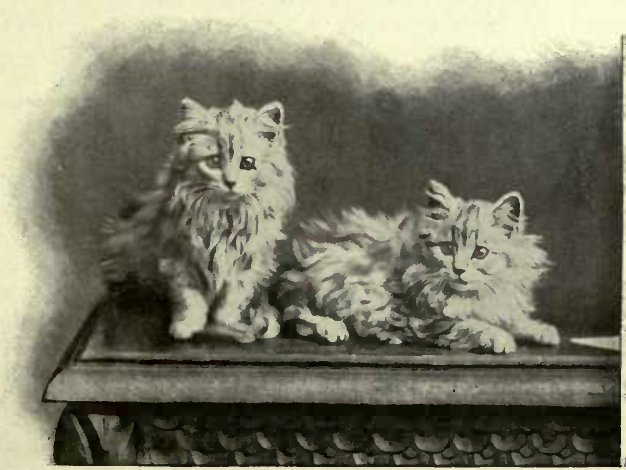
„A common occurrence among even old hands is to assign a kitten – one of a new litter under inspection, as being of‘ little good except as a pet‘ -‚to be sold at a small sum to a good home,‘ and a few weeks later discover this same kitten to be the pick of the litter. In short, the old, old story of the ugly duckling incessantly repeats itself in our catteries, certainly in those devoted to silver cats. Therefore I suspect fanciers who have succeeded (all honour to the few !) and those who mean to succeed in breeding silver Persian cats of possessing a larger stock of patience and of having acquired a larger experience than their brothers and sisters whose love has turned towards the blue, black, or white pussies.
„With these last three one may be tolerably sure – always taking for granted some knowledge – of fairly pure coat colour, and at a very early age the best kittens of the litter may be picked out – those having greatest breadth of skull, smallest ears, etc. But the silver litters are a veritable surprise packet, and remain so for an irritatingly long period. Personally, I have found that those kittens which, when born, have very pale – almost white – unbarred faces and fore legs are ultimately those which grow palest. I take no notice of the colour of the coat on the back, sides, hind legs, or tail, even if striped, as frequently happens, for all these markings generally vanish if – as I before said – the face and fore legs are unbarred. I must, however, own to one kitten who was born jet black. She was by Mrs. Champion’s ‚Lord Argent‘ and a shaded silver queen of my own breeding. When a month old I dubbed her a very bad smoke; at three months she was coatless – a most indecent little person, having shed her coat more completely than I had ever seen in cat or kitten.
When, after a provokingly long period, she again consented to appear clothed, her dress was of palest silver, unadorned by any markings except a very faint smudge on her forehead and – which, alas. spoilt her for show – a darker tinge on her broken tail. How is it that to our best some accident always happens ? So, as I could not exhibit her, I sold her to a delightful home in the North of England, and her enthusiastic owner wrote to me a few weeks since that her big babies by ‚Lord Hampton‘ were as pale as the mother, who herself grew steadily of a fainter silver.
„Unfortunately, silvers more than any other breed of cats lack bone, caused, of course, by the unavoidable in-breeding practised when this variety of cat was first introduced and so enthusiastically welcomed, and when but one or two fanciers owned a cat of such shade. Another article on this subject, by a lady who may really claim to have established this breed, will explain to the reader more than it is in my power or province to declare.
„To go back to the subject of our small silvers, in-bred to delicacy. We should now remember how many good sires, absolutely unrelated and within easy reach, are placed at our disposal. Therefore, surely there can be no possible excuse if in a comparatively short time we do not manage to own silvers big in bone and limb, and owning ah ! happy accompaniment – greater constitutional vigour.
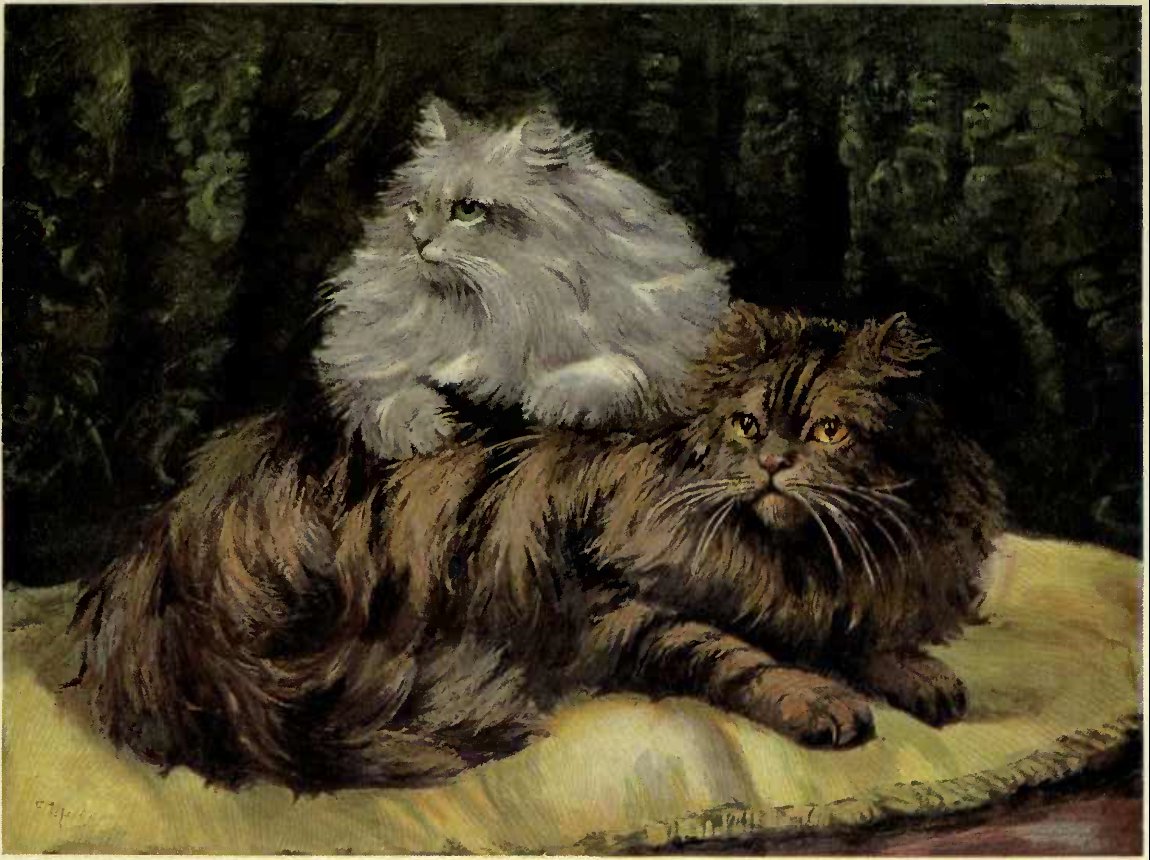
„We are, I believe, too apt, if owning a pale queen, to mate her with the palest known stud, disregarding other very important considerations in the all-absorbing wish to breed the wonderful ‚dirty white‘ king or queen of silvers. Sometimes this atom (verily so) of perfection does make its appearance, and is enthusiastically greeted. But what of the mite itself? A tiny, sickly scrap of a kitten, constantly ailing. refusing to grow or to weigh, except at a rate of less than half the average blue kitten of its own age. But extraordinary care keeps the mite alive until one day some chance draught or a maid’s carelessness ends our careful nursing, and the poor owner of that ‚lovely dirty white kit‘ at last realises that this other good-bye means it may be wiser to mate that same pale queen to the strongest, hardiest, biggest-boned stud possible to be found among our silver studs, even if he is rather barred.
„Now mark. From the result of this mating, keep the best of the female kittens and marry her – if possible, not before she is eighteen (at any rate, fifteen) months old – to a stud unrelated, sturdy, of undoubtedly splendid health, for preference paler than herself, and boasting grand head and the essential tiny ears and short nose. Then you may dream your dream-with a chance of their resulting in a golden reality.
„If breeders would but spend rather more thought when they select husbands for their pussies, they would be indeed repaid. I am not speaking, of course, to the fortunate few who have won their laurels, and of whom I would I might learn; although I rather suspect their secret of success is but the result of continual study, coupled with extreme care. Would not an enormous increase of size and weight soon become evident in the occupants of our catteries if, when a queen was about to be mated, her owner would first carefully study the list of points provided by the Silver and Smoke Persian Cat Society (previously quoted in this work), jotting down those good qualities to which she believes her queen may lay claim, and then selecting that sire possessing the points most wanting in her own cat – of course, never forgetting relationship? The old rule about in-breeding is‘ once in, twice oat,‘ as all old fanciers know; but where silver Persian cats are in question, I would most strongly urge that this adage be disregarded, and, as a rule, avoid in-breeding entirely until a stronger race of silver cats is established, cats with frames equal to those big blue beauties we see at our shows.
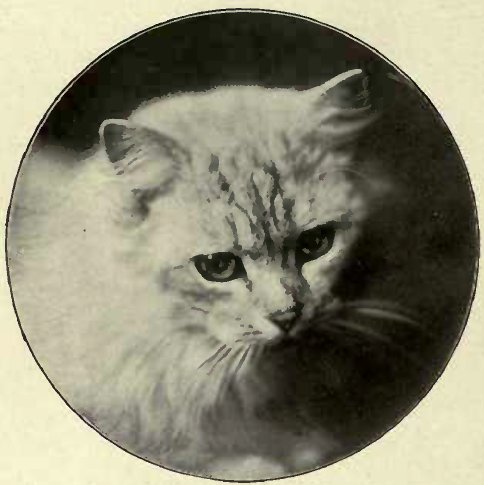
I think that in a comparatively short time – of course, always avoiding tabby blood, breeding chiefly for bone – our silver cats may be very different to those of today, those who own too fairylike limbs to be beautiful.
„A word about our famous sires – and, by the way, we may congratulate ourselves on having within reach so many beauties. Often I have letters asking for advice as to which stud such and such a queen shall visit ; and, in addition to the above suggestions, I would remind the owner that length of journey should be taken into consideration, and the fact that if the chosen sire is extremely popular it may be that a better result may be gained if the queen is sent to one not so much in request, especially if the owner of the stud cat has not been warned before of the visit of your pussie. However, most owners of stud cats are extremely careful in limiting the number of visitors, and few object to keeping Sir Thomas free for a week beforehand if given due notice.
„Do let me urge all whom it may concern to keep Madame in close confinement for several days after her return home. Indeed, in the interest of the owner of both stud and queen this is of vast importance, and many a disappointment is due to this seemingly small neglect. Puss does not always return as one would wish, however great the care given her whilst away on her holiday, and may take her matrimonial affairs into her own paws with results most unsatisfactory to everyone but herself. When the kits arrive, do not – if you have reason to expect valuable kittens as a result of the mating – leave more than two or three with the mother (I am, of course, speaking of silver kittens) for reasons I shall directly state. By far the best plan is to procure (some time before the birth of both litters) a good big English cat as foster mother, one known to have brought up a previous litter – not an old cat. The usual method of substituting her foster for her own babies is to take away the mother cat for a few minutes – of course, out of sight – and, removing one of her own kittens, rub the little silver baby with the hay of the nest and against the other kittens so that the strange smell – sense of all others so wonderfully developed in animals – may not raise suspicion in the foster mother.
Then the next day remove one or two more.
„May I, at this point, plead that the little kittens taken from their mother for your benefit should not be drowned ? If they must be sent along the silent road to the Quiet City, let it be done mercifully and by chloroform. Such wee things may rest easily in a big biscuit box, the lids of which usually close tightly, and about 1 oz. of chloroform poured on a piece of flannel or sponge laid on a small saucer by their side will send them painlessly to sleep.
„The reason I strongly advise that the English foster should nurse the best of the litter is but an echo of the old cry,‘ Want of bone.‘ Fed by the sturdy British puss, the delicate tiny balls of silver fluff will gain greater strength, and be mothered for a longer period than would be possible with their real parent.
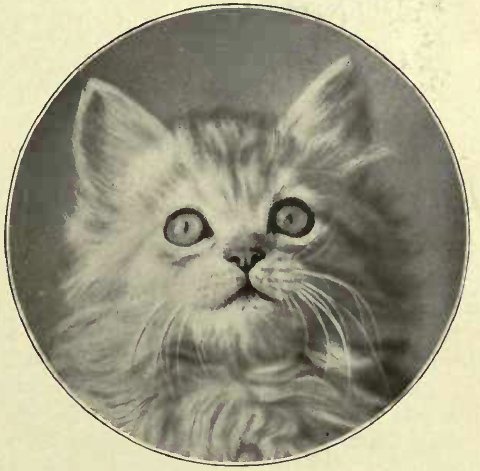
„It is necessary to remember that, although the foster mother needs extra food when nursing – just as in the case of the silver mother – more caution must be exercised when beginning the more liberal diet, for very probably, if this is forgotten, a liver attack – which will also affect the precious kits – will be the result of her unusually liberal fare. Remember, also, to inquire of the owner of your foster as to how she has been fed. With this knowledge, common sense and careful watching of cat and kittens will quickly show if it would be better to increase or diminish her meals either in quantity or quality. It is of enormous value to bespeak the foster mother, if possible, four or five weeks before the birth of the kittens, for then it will not hurt to give her what is almost certain to be necessary – i.e. a worm powder.
“ I always allow my mother pussies as much milk as they like (although, as a rule, my cats drink water), but it should be boiled, and one tablespoonful of lime-water added to each half-pint. When I once urged this care of the foster mother to a friend who owned two kittens she was extremely anxious to rear, I was laughed to scorn, and assured that such fussiness about a strong English cat was more than foolish. Yet I would remind breeders who are inclined to agree with the above opinion that on the perfect health of your head nurse rests the future of your much-prized litter. On her depends their growth, their first chance of throwing off their natural delicacy. Mr. House, in one of his articles lately published in Fur and Feather, advises that kittens should be kept with and fed by their mothers as long as sixteen weeks. In my humble opinion this is too great a strain on any Persian cat, but there may be great wisdom in keeping the kits with the mother or foster for as long as it is possible without overtaxing the cat.
The same authority speaks of a relay of foster mothers.
I confess this puzzles me, for I should imagine that the food supplied by the second mother would be too weak in quality (as Nature provides it shall be of different quality to suit the age of all and every kind of baby) for the big kits after that of the first foster, and I should have also imagined the second foster would refuse to nurse kits so much bigger than those she had just left.
“ When my kits are four weeks old I give them raw lean beef – scraped, not chopped – beginning with half a teaspoonful daily, then the same quantity twice daily, then three times a day; and at the same time teach them to lap, using a plate, which, being shallower than a saucer, causes less choking and fear to the little things.“
Mrs. G. H. Walker, of Woodheys Park, is the chief supporter of the Northern Counties Cat Club, and is a member of the National Cat Club Committee. For several years she has been a well-known breeder and exhibitor of silver Persians, and has a most excellently planned cattery, which I had the pleasure of seeing when on a visit to Woodheys Grange. Mrs. Walker kindly had some views taken, specially for reproduction in these pages. I consider the arrangements for the pussies‘ comfort and well-being as complete as it is possible to make them. The floors of the outside catteries, which face south, are cemented, so that they can be washed over every day. The roofs are boarded, and then covered with galvanised iron, so that all the rain runs away easily. The spacious apartments are fitted with benches and ledges, and trunks of trees and leafy shrubs are planted in the ground for the cats‘ special amusement and exercise. The kennels – which, for the purpose of photographing them have been placed outside – are the cosy sleeping dens of the pussies.
There is a maid in attendance on these fortunate cats, and the man who looks after the kennels, of dogs also gives a helping hand.
In one of the pictures will be seen a staircase, and this leads to three charmingly arranged rooms. All the appliances and utensils connected with the animals are kept in one of these apartments. Another is set apart for mothers and their families, and a third is kept in case of illness for an isolation ward. In one of the loose boxes near at hand the cooking for the pussies is carried on, and there is a larder specially for the cats‘ food. Mrs. Walker devotes much of her time to looking after her pets, and great has been her sorrow over the untimely death of some of her treasured pussies. After one of the large shows, infection crept into her cattery, and worked most cruel havoc. Such losses as Mrs. Walker sustained were enough to damp the ardour of the most enthusiastic cat lover and fancier; but the lady of Woodheys Grange bravely faced the situation, and after a period of sad reflection she once again resumed her hobby with renewed interest. At the Northern Counties Cat Show at Manchester in 1902
Mrs. Walker exhibited a really wonderful silver kitten. I say wonderful, for this youngster, bred from the owner’s „Wood-heys Fitzroy“ and „Countess,“ was the most unshaded and unmarked specimen of a silver I have ever seen. This unique specimen will be watched with interest by silver fanciers. May his shadings ever grow less !
The average number of inmates of this cattery is about thirty, but at one period of Mrs. G. H. Walker’s catty career the silver fever ran high, and there were sixty-three cats and kits within the precincts of the spacious and luxurious catteries of Woodheys Grange.
Mrs. Martin, of High Wycombe, who has often acted as judge, has been a most successful breeder of silvers, and the progeny by “ St. Anthony,“ her noted sire, have distinguished themselves by winning over one hundred prizes. „St. Anthony “ has retired into private life, but he will always be remembered if only by his two children “ Silver Dove “ and “ Fascination.“ Mrs. Martin says, “ I am all in favour of the male being older than the queen in breeding silvers ; also select a good-coated stud cat, short in the legs. Eyes are a worry just now. Of course, I like green best, but if a cat is good in all points but colour of eye, this should not upset an award. I find that if a kitten is born almost self silver, it will develop into an indifferent silver tabby later ; but if the body is dark, and head and legs light and clear, you may hope for a very unmarked specimen in due time.“
Mrs. Wellbye’s silver cats „Dossie,“ „Silver Lotus,“ and „Veronica“ were at one time well-known winners, and for length of coat and beauty of eye have seldom been surpassed. Mrs. Wellbye is a most astute judge of silvers, and her remarks on this her favourite breed will be read with interest : „This handsome variety of the Persian ranks high in the estimation of cat lovers; indeed, its ardent admirers consider it the creme de la crime of the cat world. And why not ? Surely there is nothing to compare with a lovely young chinchilla Persian in full coat. Its very daintiness and seeming pride in itself is quite charming. One is reminded of a pretty child dressed out in its party frock, for puss appears to know it is well dressed and desirous to show her charms to the best advantage. She dances, pirouettes, and throws herself into the most graceful and entrancing attitudes, until we feel in sympathy with the Egyptians of old and are willing to fall down and worship our adorable pets. We all love beauty, but to those who love cats there is something beyond even beauty, for only they who keep and care and treat them well know the comfort these little creatures are, and the happiness they can bestow by their sweet caressing ways, perhaps more especially to those whose hearts are starved of human love, but still to all whose sympathies are wide of the varieties of silver cats.
I will first treat of the chinchilla.
„The Crystal Palace show of 1895 or 1896 was the first I remember with a class for chinchillas; previous to that, I believe, they were not recognised as such, but were shown with the silver tabbies. Strictly speaking, the name chinchilla is a misnomer as applied to these cats. The soft grey coat of the little animal called the chinchilla, whose lovely fur is so much prized as an article of ladies‘ dress, differs diametrically from the cat so called.
„The fur of the chinchilla is dark at the roots, and shades quite pale grey at the tips. The cat’s fur, on the contrary, is absolutely pale grey, almost white at the roots, but tipped with black at the outer edges.
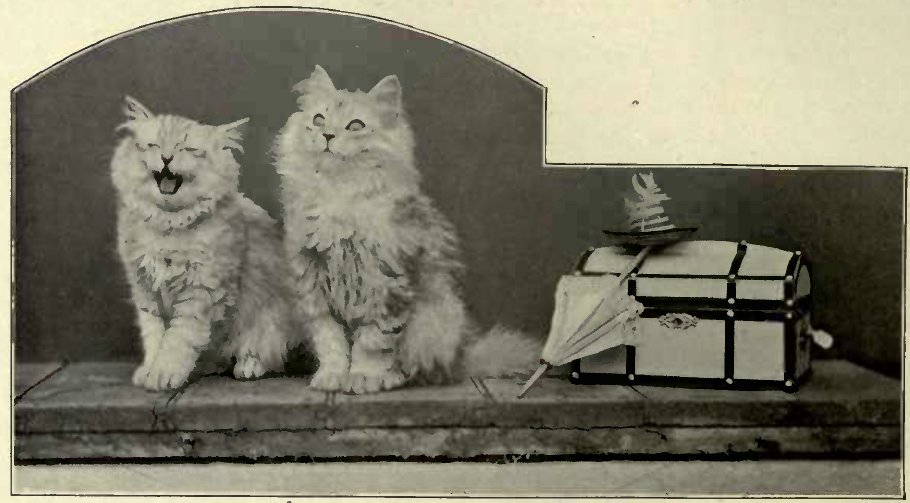
„The points as laid down by the Silver Society are as follow :‘ Chinchillas should be as pale and unmarked silver as it is possible to breed them.‘
„The aim of the breeder of this variety, therefore, is to obtain a cat with none of the markings of the original stock (the silver tabby), the dark tippings to be slight and faint.
„Breeders have found this ideal most difficult to obtain; although some kittens are born pale all over, with no markings; in a few weeks – or maybe months – the hope of the family is no more, for the lighter the kitten the more delicate. ‚Whom the gods love, die young.‘ Or, again, if the cherished one lives over its baby troubles, and starts on the change from its first, or kitten coat, to the second coat, too often do the markings appear, the shadings get darker, or fine black hairs are seen amongst the pale grey. Some of the best chinchilla kittens have been born quite dark, and with tiny stripes all over. At a month or six weeks these marks have disappeared, and later the coat has become an even silver.
„The breeder must not even then build high hopes. Again change may occur. There is no cat which varies so much; it is quite chameleon-like in this respect.
„A few years ago the Cat Club adopted the name of ’self silver‘ as applied to the chinchilla – another misnomer, as a self silver should have no tippings or shadings, and the silver cat has not been bred that had fur the same shade throughout from roots to tips.
‚The slight dark edging to the fur constitutes to most people the charm in these silvers. Sometimes it is almost imperceptible to the casual observer; or when the cat is in full coat (the fur being from three to seven inches long on the tail – sometimes as much as nine inches) the tiny fleckings are lost in wavy, tossing, billowy coat. But let the coat become damp, however slightly, it will be seen that the dark edges are clearly in evidence.
„As, however, breeders could not always produce the pale shade of silver, the litters, even with the most careful mating, being generally assorted in good, bad, and indifferent so far as colour was concerned, many fine cats – dark silvers – had no place assigned to them.
„It was then suggested that a class should be given at the shows to be called ‚ shaded silver,‘ the points according to the Silver Society being as follows: „‚Shaded silvers should be defined as pale, clear silver, shaded on face, legs, and back, but having as few tabby markings as possible.‘
„The dark or shaded silvers, it was understood, should have pale, clear undercoats; but instead of the neckings of the self silver (so called), the dark edges ran a considerable way into the fur. The shaded silver is a handsome cat, but too often much marked on the face and barred on the legs, a defect most difficult to overcome. Many cat fanciers describe the shaded silver as a ’spoilt tabby.‘ „The third in the group of silvers is the silver tabby. The points are here stated : „‚The colour of a silver tabby should be a pale, clear silver, with distinct black markings.‘
„This variety ought in equity to have been mentioned first, as it is the original stock, but it has been overshadowed by the superior attractions of the chinchilla. (Silver tabby enthusiasts will perhaps pardon this eulogy of my favourite breed.) There is not the slightest doubt this handsome cat, the silver tabby, has suffered materially from the craze for the newer variety, and consequently the type has not been kept pure. They have been mated over and over again with cats of less markings in the hope of breeding chinchillas, until at the present day there are very few silver tabbies true to type.
„The position of the silver tabby in the feline scale is very peculiar. As a Persian it is, of course, necessary that its coat should be long and fine, whilst as a tabby it is desirable that the markings should show up to advantage. How to reconcile the two is the puzzle, for the longer the coat the less the markings are evident, as the stripes are merged in the flowing coat, so that we sometimes see at the cat shows exhibits woefully out of coat placed in the first rank, as the markings are much more distinct. It follows, then, in this variety of the silver, a long coat is distinctly a disadvantage when competing at shows.
„Having now obtained three types for silvers, and the Cat Club willing to give classes for them at the great shows held in St. Stephen’s Hall, Westminster, the outcome was looked forward to with much interest. But it was one thing to get four types, and quite another matter to get silver breeders to understand the fine distinction ; consequently, the cats were entered in self silver, shaded silver, and silver tabby classes indiscriminately. The result was, of course, muddle and confusion, many exhibitors having the mortification of finding ‚Wrong Class‘ on the cat pens.
„At a recent show held at Westminster under the auspices of the Cat Club, the judge was asked by the Honorary Secretary to go round the classes first, and if any exhibit was wrongly placed to re-classify before judging. This worked satisfactorily so far as disqualification was concerned.
„At this show, however, the judge was confronted with another difficulty, it being found that most of the cats in the classes for shaded silver had deviated materially from the standard of points laid down by the Silver Society. Instead of the clear, pale undercoat, the fur was a dark grey right down to the skin. The majority of these cats were quite dark, and, rightly speaking, were not silvers – that is, if one bears in mind the metal so named. It is difficult to say in what class they could be placed, unless a new class was created, to be called ‚clouded or oxydised silver.‘ If we go on to these subdivisions we shall not know where to stop. Self silver or chinchilla, shaded silver, clouded silver, and silver tabby – a truly appalling problem for the bewildered judge to decide, for the majority of exhibitors would not appreciate the variations.
„It may come to this eventually, but at the present time the threefold classification leads to much confusion, for as nearly – or very nearly – all silver cats are more or less tabby marked, so will exhibitors be in doubt as to the class to which their cats rightly belong.
„It is a question if the introduction of the shaded class at shows has not done more harm than good, for as previously we saw very few of the dark silvers – it not being worth breeding the variety when there was no class in which to show them – so now the tendency of exhibits, as anyone who attends shows can see, is to run to darkness rather than light; and breeding for colour, purity of colour, and absence of markings has received a set-back, for with some judges colour is nothing, and prizes will be showered upon a‘ spoilt tabby‘ if it happens to have, perhaps, a broader head or a bulkier body – good points, as everyone will allow, but points which the common or garden cat may possess; and we do not pit our dainty chinchillas against all and sundry.
„Without wishing in any way to detract from the good qualities which the more plebeian branches of the cat tribe undoubtedly possess, it is impossible not to award the palm for grace and beauty to the highly bred aristocratic chinchilla. Coal and iron are useful, but we give our admiration to diamonds and pearls.“
Before closing the chapter on silvers, I will allude to the Cat Club show held at St. Stephen’s Hall, Westminster Aquarium, in January, 1903. On this occasion there was quite a record entry in the male silver class, which contained twenty-one cats. The list was headed by Mr. J. F. Dewar’s handsome „Father O’Flynn II.“ Many well-known prize winners had to be content with a V.H C. card in this class of quantity and quality. The females numbered eighteen, and here again a noted winner was awarded the highest honours. Miss Chamberlayne’s „Cap and Bells“ is very pale and pure in colour, and carries a soft, silky coat. In the silver kitten class the sexes were not divided, and Miss Ford’s lovely kittens scored first and third. A sweeter face and rounder head than that possessed by „Silver Button,“ the first prize winner, would be difficult to find, and Miss Ford may be congratulated on having bred such a gem. Mr. T. B. Mason judged the silver classes at this show, and he doubtless experienced some difficulty in testing the colour of the exhibits in the bad light of St. Stephen’s Hall, more especially as on the opening day of the show a dense fog hung over the city.
Another difficulty which must present itself to our most capable judges is the awarding of specials offered for silvers and shaded silvers. Perhaps the easiest way out of this difficulty is to give the shaded silver prizes to the darkest cats; but all are shaded, even the palest, and therefore some judges might justify themselves if they awarded both sets of specials to the one cat. At this show Lady Marcus Beresford offered three special prizes in each silver cat class for the palest specimens, one of these in the male class being won by her own handsome „Beetle,“ a son of the famous „Lord Southampton.“ The classification for silvers at the specialist societies‘ show at Bath, which followed close after the Westminster show, was the largest that has ever been given, consisting of classes for novices and breeders, in addition to the ordinary division and subdivision for cats and kittens. The sensible plan of a ring class for neuters only was adopted.
Members of the specialist society for the encouragement of silvers must on this occasion have felt proud of the liberal classification and of the long list of handsome special prizes offered for their favourite breed of longhaired cats.
